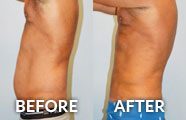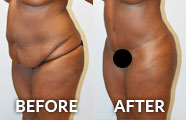Did you know that adults who watch more than 4 hours of TV a day have an 80% increased risk of dying from cardiovascular disease?
As we get ready for Heart Month, we want to remind our patients and blog readers how important physical activity is to maintaining a healthy heart. But knowing which kinds of exercise to do and how often you need to do them can be confusing, especially when there is conflicting information on the internet.
How Much Do I Need?
For overall heart health, the American Heart Association (AHA) recommends that you get in at least 30 minutes of moderate-intensity aerobic exercise five times a week, or at least 25 minutes of vigorous exercise three days a week, or a combination of moderate and vigorous exercise throughout the week. The AHA also recommends that you perform strength training activities such as lifting weights twice a week to achieve additional health benefits. To lower blood pressure and cholesterol, the AHA recommends 40 minutes of moderate to vigorous-intensity aerobic exercise 3-4 times per week.
Where Do I Find the Time?
One of the biggest obstacles to exercising regularly is that many have such hectic schedules already. It’s easy to look at exercise as “one more thing”—another item to add to a never-ending to-do list. And it’s hard to get excited about exercise when you look at it as something to get through! However, there are many opportunities to slip some extra exercise in to your daily routine without it feeling like a chore. Here are 10 tips for adding more physical activity into your day:
Get a pedometer. A device such as a pedometer, Fitbit, or even an activity-tracking app on your smartphone can make a huge difference in your motivation. There’s just something about seeing those steps rack up to make you want to take even more! Whether you log time on the treadmill, walk the track at your local high school, or simply stroll around your neighborhood with your dog, your steps are bound to increase with the positive reinforcement a step-counter provides.
Don’t try to do it all at once. Research has repeatedly shown that dividing your daily exercise routine into shorter increments is still beneficial for your health. It’s easier to find time for three ten-minute sessions than a block of 30 minutes, and you’re less likely to get bored or distracted.
Strength train while watching TV. With a little creative thinking, you can make just about any downtime into a workout session. Next time you’re watching your favorite drama, keep your arms moving with a set of 10-pound hand weights. During commercials, squeeze in some squats and lunges to work your lower body.
Exercise earlier rather than later. At first it may be challenging to jump right into an exercise routine in the morning, but the extra energy you’ll gain from getting your heart pumping first thing will be invigorating. And, if you start your day with a workout, your exercise goals won’t get sidetracked by unexpected work or family responsibilities that crop up later in the day.
Use your lunch break to exercise. Work up an appetite by starting your lunch with a brisk 20-minute walk, alternating speed-walking with a more moderate pace. Find a workout buddy for extra motivation and company—or a little friendly competition.
Take the stairs. Going up, going down, at work, at home, at the mall—if you have the choice between stairs and an elevator or escalator, pick the stairs.
Replace your office chair with a stability ball. Some fortunate employees have treadmills or standing desks at work, but these probably won’t be making an appearance in most offices anytime soon. Even if you don’t have a fancy, exercise-friendly desk, you can get a big boost by swapping your office chair for a $30 stability ball. Balancing on a stability ball will help you strengthen your abdominal and lower back muscles…while you sit!
Relax after work with yoga. Yoga is not only great exercise, it’s beneficial for helping you stretch, tone and strengthen your muscles and de-stress after a hectic work day. Ease into your evening routine with 20-30 minutes of yoga and you may even sleep better.
Amp up your cleaning routine with music. Doing household chores with a soundtrack is much more likely to get your blood pumping than doing the same tasks sans music. Make a playlist of your favorite, high-energy songs to keep you company during housework. You might even find yourself dancing as you do the dishes.
Involve the whole family. With the incidence of childhood obesity on the rise, it’s good to remember that exercise benefits the whole body—not just the heart, and not just for adults. Spend some time after dinner taking a walk as a family, tossing a football, gardening, or taking a bike ride.
Remember, your heart is a muscle and needs exercise to stay fit and healthy. Try to think creatively about how you can turn a sedentary activity into one in which at least part of you is moving. If you’ve been inactive for months or years, start slowly and work your way up (and check with your physician before starting an exercise routine). Your heart—and your family—will thank you for it!



